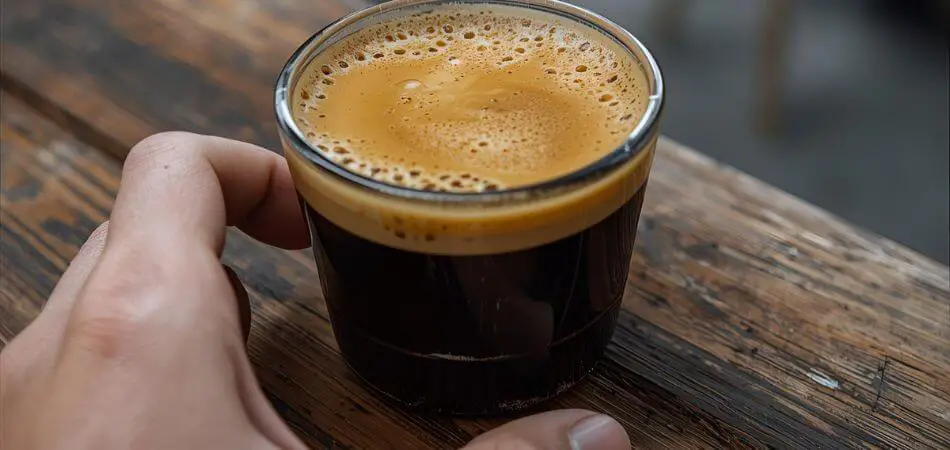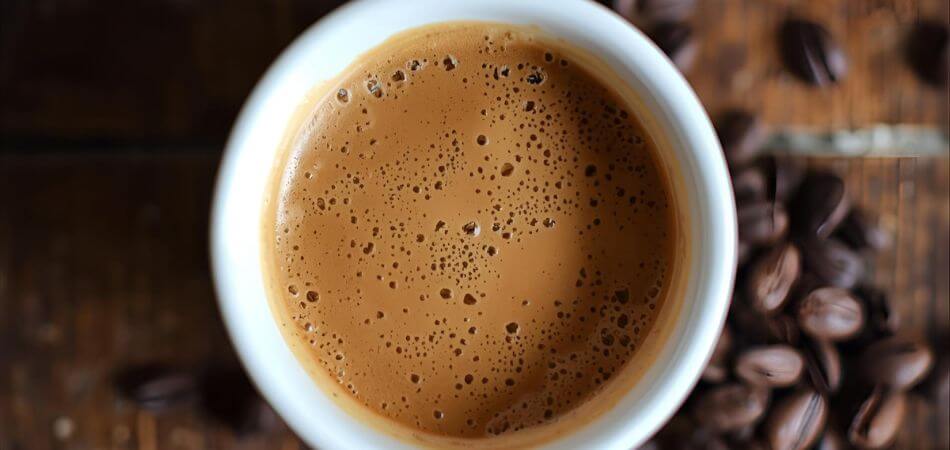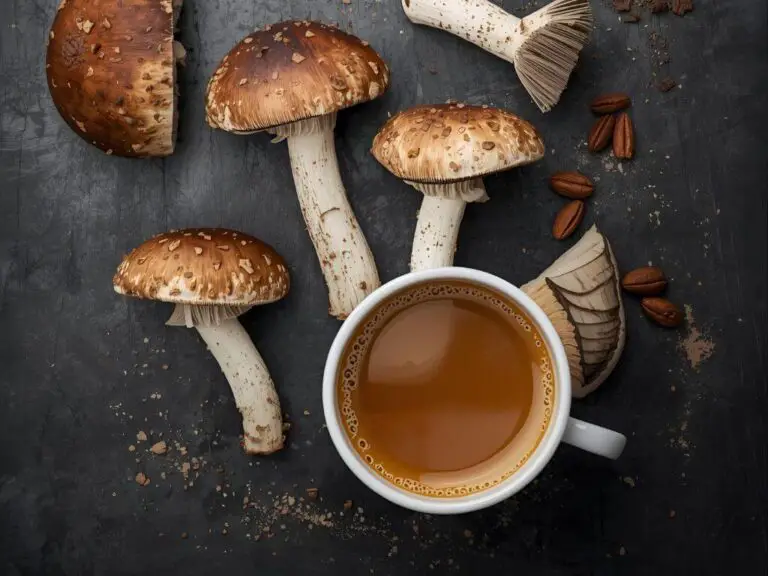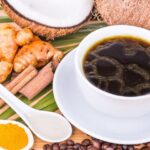Vietnamese Coffee Taste: A Definitive Guide
If you love coffee, get ready — Vietnamese coffee taste is a whole mood. It’s bold, a little gritty, and often surprisingly sweet. Imagine a heavy, dark brew that punches you awake, then melts into creamy sweetness thanks to condensed milk — that contrast is the heart of Vietnamese coffee.
In this post I’ll walk you through what makes Vietnamese coffee so memorable: the beans, the slow phin-brewed method, the creamy add-ins, and the flavor notes you’ll taste in every sip. By the end, you’ll know why people call it strong, sweet, and unforgettable — and how to spot that signature Vietnamese coffee taste when you try it.
What we’ll cover next (quick look):
- Origins & culture 🇻🇳
- Brewing style (phin filter) and why it matters
- The role of robusta beans and condensed milk
- How it’s different from other coffee styles

What is Vietnamese Coffee? — Origins, Tools & Why It’s Different
The core ingredients (short table)
| Element | Common in Vietnamese coffee |
|---|---|
| Beans | Robusta (widely used) or Robusta/Arabica blends |
| Brew tool | Phin filter (small metal drip filter) |
| Sweetener | Sweetened condensed milk (classic) |
| Serving | Hot or iced (very common) |
The phin filter — simple, slow, soulful
The phin is a small metal drip filter that sits on top of your cup. The water slowly drips through coffee grounds — this slow extraction creates a heavy, concentrated brew. Here’s a quick phin method so you can picture it:
- Add 2–3 tablespoons of ground coffee to the phin.
- Lightly tamp the grounds, place the press on top.
- Pour a little hot water to bloom, wait 20–30 seconds.
- Fill with hot water and let it drip for 3–5 minutes into the cup (longer if coarser grind).
- Stir in sweetened condensed milk (if making cà phê sữa).
✨ Tip: The slow drip is part of the flavor — it brings out deeper, heavier notes than a quick espresso shot.
Why Vietnamese coffee tastes different
- Robusta beans: More body, more bitterness, and more caffeine than many Arabica beans. That gives the brew its strong backbone.
- Slow extraction (phin): Produces a thick, concentrated cup — more oils and a heavier mouthfeel.
- Condensed milk: Adds dense sweetness and creamy texture, turning a bitter brew into a dessert-like drink.
- Serving style: Iced versions (cà phê sữa đá) dilute and chill the intensity while keeping that sweet–bitter contrast.
The Flavor Profile of Vietnamese Coffee ☕🌟
When people describe Vietnamese coffee taste, you’ll often hear words like bold, rich, intense, and sweet. But let’s break it down so you can imagine it sip by sip.
🔑 Main Flavor Notes
- Rich & strong → It hits harder than your average drip coffee.
- Natural bitterness → Comes from the Robusta beans, which are higher in caffeine.
- Sweet & creamy → Condensed milk (when used) transforms the bitterness into a dessert-like experience.
- Chocolatey & nutty undertones → You’ll often pick up earthy, cocoa, or caramel-like hints.
- Heavy mouthfeel → Thicker than Arabica-based coffee; sometimes described as “syrupy.”
🎨 Quick Taste Breakdown
| Taste Element | How It Shows Up in Vietnamese Coffee |
|---|---|
| Strength 💪 | Very strong, concentrated flavor |
| Bitterness 😬 | Noticeable but balanced with milk/sugar |
| Sweetness 🍯 | Comes mainly from condensed milk |
| Mouthfeel 🥄 | Thick, heavy, smooth |
| Flavor notes 🍫🌰 | Chocolatey, nutty, caramel, earthy |
☕ Vietnamese Coffee vs. Arabica Coffee
Most coffees around the world (like lattes, cappuccinos, and pour-over) are based on Arabica beans. Here’s how they compare:
| Feature | Vietnamese Coffee (Robusta-heavy) | Arabica Coffee |
|---|---|---|
| Strength | Strong, bold, intense | Milder, smoother |
| Bitterness | Higher, natural | Lower, more acidic |
| Caffeine ⚡ | ~2x more than Arabica | Moderate |
| Flavor notes | Nutty, earthy, chocolatey | Fruity, floral, bright |
| Mouthfeel | Heavy, syrupy | Light, silky |
👉 In short: Arabica is like a smooth jazz tune 🎶, while Vietnamese coffee taste is more like rock & roll 🎸 — bold, powerful, and unforgettable.

Key Factors That Shape the Taste of Vietnamese Coffee 🎯
So, what exactly makes Vietnamese coffee taste so bold and unique? It’s not just one thing — it’s a combination of beans, brewing, add-ins, and serving style. Let’s break it down:
🌱 1. Type of Beans: Robusta vs. Arabica
- Robusta beans (most common in Vietnam):
- Higher caffeine content ⚡
- Stronger, more bitter taste
- Earthy, nutty, sometimes chocolatey notes
- Thicker body
- Arabica beans (less common in Vietnam):
- Softer, fruitier flavors
- More acidity and brightness
- Lighter body
👉 Most Vietnamese coffee uses Robusta or blends with Robusta as the base, which is why the flavor feels so powerful compared to Western coffee.
☕ 2. Brewing Method: Phin Filter vs. Others
- Phin filter → Slow drip method extracts deep flavors, giving coffee a thick, rich texture.
- Espresso machine → Quick, high pressure; smoother but less earthy.
- French press / drip machines → Cleaner taste, lighter body.
💡 The phin filter is key — it’s what gives Vietnamese coffee that extra bold punch.
🍶 3. Additives That Change the Taste
Vietnamese coffee isn’t always just “coffee + water.” Add-ins are part of its charm:
- Condensed milk → Sweet, creamy, dessert-like balance.
- Coconut milk 🥥 → Adds tropical sweetness and nuttiness.
- Egg yolk 🥚 → Creates a frothy, custard-like drink (egg coffee).
- Sugar or creamers → Less common but used at times.
❄️ 4. Serving Style: Iced vs. Hot
- Hot → Strong, thick, comforting; bitterness more pronounced.
- Iced (cà phê sữa đá) → Diluted slightly by ice, but refreshing and sweet with condensed milk.
- Iced black (cà phê đen đá) → Bitter, smoky, and bold — no sweetness to mask the intensity.
✅ In short: The Vietnamese coffee taste is shaped by robust beans, the slow phin drip, creamy condensed milk, and whether it’s enjoyed hot or iced. Each factor changes the experience just enough to keep it exciting.
Sweetness & Creaminess
One of the biggest secrets behind the unforgettable Vietnamese coffee taste is sweetened condensed milk. Instead of fresh milk or cream, which spoil easily in hot climates, condensed milk became the go-to choice in Vietnam — and it completely transformed the coffee-drinking experience.
🌟 Why Condensed Milk?
- History & practicality: Fresh milk wasn’t always available in Vietnam during the early coffee days. Condensed milk (long shelf life, portable) was the perfect solution.
- Flavor balance: It softens the bitter edge of Robusta beans, creating a smoother, sweeter cup.
- Texture: Thick and creamy, giving coffee a dessert-like quality.
💡 How It Changes the Taste
- Turns bitter coffee → sweet, velvety drink.
- Adds a caramel-like sweetness (since condensed milk is cooked down sugar + milk).
- Makes the drink feel heavier and more indulgent, almost like a treat rather than just a beverage.
🎀 Comparison: Coffee with Condensed Milk vs. Fresh Milk
| Feature | With Condensed Milk | With Fresh Milk |
|---|---|---|
| Sweetness | High, caramel-like 🍮 | Mild sweetness |
| Texture | Thick, creamy | Light, smooth |
| Flavor balance | Bitter-sweet contrast | Softer, less bold |
| Experience | Dessert-like indulgence 🍰 | Everyday coffee feel |
✨ That’s why when people describe Vietnamese coffee taste, they often say it’s intense yet sweet, strong yet creamy — condensed milk is the hero behind that harmony.
Popular Vietnamese Coffee Variations & Their Taste 🍹☕
Vietnamese coffee isn’t just one flavor — it’s a family of bold, creative variations. Each version brings a new twist to the classic Vietnamese coffee taste, making it exciting for every coffee lover. Let’s explore the most popular ones:
🧊 Cà Phê Sữa Đá (Iced Coffee with Condensed Milk)
- Taste: Strong, bold coffee softened by thick, sweet condensed milk.
- Experience: Refreshing, dessert-like, and perfect for hot days.
- Why try it: It’s the most iconic Vietnamese coffee, loved worldwide.
☕ Cà Phê Đen Đá (Iced Black Coffee)
- Taste: Pure, bold bitterness with smoky undertones.
- Experience: No sugar, no milk — just the raw power of robusta beans.
- Why try it: For true coffee purists who love intensity.
🥚 Egg Coffee (Cà Phê Trứng)
- Taste: Rich coffee topped with a creamy, sweet foam made of whipped egg yolk + condensed milk.
- Experience: Feels like sipping liquid tiramisu or custard. 🍮
- Why try it: A specialty drink from Hanoi that surprises every traveler.
🥥 Coconut Coffee
- Taste: Tropical sweetness from coconut milk or cream, paired with strong coffee.
- Experience: A refreshing mix of nutty, sweet, and bold flavors.
- Why try it: Perfect for summer; feels like a tropical vacation in a cup. 🌴
📊 Taste Comparison Table
| Coffee Type | Flavor Profile | Sweetness Level | Creaminess | Best For |
|---|---|---|---|---|
| Cà Phê Sữa Đá 🧊 | Strong + sweet + balanced | High | Medium | Everyday treat |
| Cà Phê Đen Đá ☕ | Bold, bitter, smoky | None | None | Coffee purists |
| Egg Coffee 🥚 | Custard-like, dessert flavor | Medium-high | High | Dessert lovers |
| Coconut Coffee 🥥 | Tropical, nutty, refreshing | Medium | Medium | Summer coffee fans |
✅ As you can see, Vietnamese coffee isn’t “one-size-fits-all.” Each version takes the base boldness of robusta coffee and turns it into something new — from smoky strength to creamy indulgence.

Vietnamese Coffee Compare to Other Coffees?
One of the best ways to understand Vietnamese coffee taste is to see how it stacks up against other famous coffee styles. Every culture has its own way of brewing, but Vietnamese coffee stands out for being bolder, sweeter, and creamier than most.
🇺🇸 Vietnamese Coffee vs. American Drip Coffee
- Vietnamese: Strong, concentrated, thick, often sweetened with condensed milk.
- American drip: Lighter, more watery, mild flavor, usually taken black or with fresh milk.
👉 If American coffee is like a gentle wake-up call, Vietnamese coffee is a powerful alarm clock! ⏰⚡
🇮🇹 Vietnamese Coffee vs. Italian Espresso
- Vietnamese: Brewed slowly with phin filter, bold but less acidic, sweeter if condensed milk is added.
- Espresso: Brewed quickly under pressure, sharp acidity, smoother finish.
👉 Espresso is quick and sharp, while Vietnamese coffee is slow, deep, and indulgent.
🇹🇷 Vietnamese Coffee vs. Turkish Coffee
- Vietnamese: Bold, bitter-sweet, nutty, creamy (if milk added).
- Turkish: Strong, unfiltered, often spiced with cardamom, very thick sediment.
👉 Turkish coffee feels exotic and spicy, while Vietnamese coffee feels bold and sweetly comforting. 💖
📊 Quick Comparison Table
| Feature | Vietnamese Coffee 🇻🇳 | American Drip 🇺🇸 | Italian Espresso 🇮🇹 | Turkish Coffee 🇹🇷 |
|---|---|---|---|---|
| Strength 💪 | Very strong | Mild | Strong | Strong |
| Texture 🥄 | Thick, syrupy | Light, watery | Smooth, concentrated | Dense, gritty |
| Sweetness 🍯 | Often sweet (condensed milk) | Usually none | Bitter-smooth | Sometimes sweetened |
| Flavor Notes 🍫 | Nutty, chocolatey, earthy | Mild, neutral | Bright, acidic | Spicy, bold |
| Brewing Method | Phin drip | Drip machine | Espresso machine | Boiled in cezve |
✅ In short: Vietnamese coffee taste is closest in strength to espresso and Turkish coffee but stands out with its sweet creaminess and heavy body.
Tips for Experiencing Authentic Vietnamese Coffee Taste at Home 🏠☕
Want to enjoy the bold, sweet, and creamy Vietnamese coffee taste without leaving your home? Here’s a friendly guide to making it as close to the authentic experience as possible.
🌱 1. Choose the Right Beans
- Robusta beans → The classic choice for bold flavor and higher caffeine.
- Blends → Some prefer Robusta/Arabica mixes for slightly smoother taste.
- Freshly ground → Always grind just before brewing for maximum aroma.
🛠 2. Get a Phin Filter
- Small metal drip filter that sits on top of your cup.
- Cheap, reusable, and essential for authentic Vietnamese coffee.
- Optional: small spoon and stirrer for mixing condensed milk.
☕ 3. Step-by-Step Brewing Method
- Add 2–3 tablespoons of ground coffee to the phin.
- Lightly press down with the filter’s press.
- Pour a little hot water to bloom for 20–30 seconds.
- Fill with hot water and let it drip slowly (3–5 minutes).
- Stir in 2–3 tablespoons of condensed milk (adjust to taste).
- For iced coffee, pour over a glass filled with ice. 🧊
🍯 4. Adjust Sweetness & Strength
- More condensed milk → sweeter, dessert-like coffee.
- Less condensed milk → stronger, more bitter taste.
- Adjust coffee amount → add or reduce coffee grounds to control strength.
🥥 5. Try Variations
- Egg coffee (cà phê trứng) → whip egg yolk + sugar for creamy foam.
- Coconut coffee → replace condensed milk with coconut milk or cream.
✅ Pro tip: Pour slowly, sip slowly — the experience of Vietnamese coffee taste is as much about the ritual as the flavor.
Conclusion 🎉☕
Vietnamese coffee is more than just a drink — it’s a full sensory experience. From the bold, robust flavors of Robusta beans to the sweet, creamy touch of condensed milk, every cup tells a story of culture, tradition, and pure indulgence.
FAQ’s
Is Vietnamese coffee very bitter?
Yes, Vietnamese coffee is famously strong and bitter from its dark roast Robusta beans, but this is perfectly balanced by the sweet, creamy taste of condensed milk.
Why does Vietnamese coffee taste like chocolate?
The chocolatey notes in Vietnamese coffee come from its dark roast profile and the inherent characteristics of Robusta beans, which often have nutty, cocoa-like flavors. This is sometimes enhanced by the caramelization of sugar in sweetened condensed milk.







